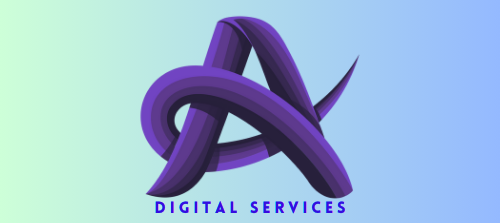Mastering the Art of Social Media for School Recruitment
Social media has become an undeniable force in today’s world, and schools are no exception. It’s no longer just a place for students to connect; it’s a powerful tool for schools to reach prospective students and their families, showcasing their unique offerings and building a vibrant community. This guide explores how schools can effectively leverage social media to enhance their recruitment efforts. Understanding the Landscape: Before diving in, it’s crucial to understand the social media landscape. Different platforms cater to different audiences. Instagram is visually driven and popular with younger demographics, making it ideal for showcasing campus life and student activities. Facebook remains a strong platform for reaching parents and community members. Twitter is excellent for sharing news, updates, and engaging in conversations. YouTube allows you to share longer-form content like virtual tours and student testimonials. Even newer platforms like TikTok can be leveraged for creative, short-form video content.

Crafting a Winning Strategy
Effective social media recruitment requires a well-defined strategy. Here’s a breakdown of key steps:
- Define Your Target Audience: Who are you trying to reach? Prospective students? Their parents? Identifying your target audience will help you tailor your content and choose the right platforms.
- Set Clear Goals: What do you want to achieve with social media? Increase website traffic? Boost application numbers? Defining your goals will help you measure your success.
- Choose the Right Platforms: Don’t try to be everywhere at once. Focus on the platforms where your target audience is most active.
- Develop a Content Calendar: Plan your content in advance to ensure consistency and avoid last-minute scrambles.
- Establish a Brand Voice: Develop a consistent tone and style that reflects your school’s personality and values.
Creating Compelling Content
Content is king on social media. Here are some ideas for creating engaging content that resonates with prospective students and their families:
- Showcase Campus Life: Share photos and videos of students participating in clubs, sports, and other activities. Give prospective students a glimpse into the vibrant community at your school.
- Highlight Academic Excellence: Share stories of student achievements, faculty accomplishments, and innovative teaching methods. Showcase the value of your academic programs.
- Student Testimonials: Feature current students sharing their experiences at your school. Authentic voices can be incredibly persuasive.
- Virtual Tours: Offer virtual tours of your campus, highlighting key facilities and learning spaces. This is especially helpful for students who can’t visit in person.
- Behind-the-Scenes Content: Give followers a peek behind the scenes at your school, showcasing the hard work and dedication of your faculty and staff.
- Answer FAQs: Address common questions that prospective students and their families might have. This can save time and provide valuable information.
- Run Contests and Giveaways: Engage your audience with fun contests and giveaways. This can help increase your reach and generate excitement.
- Go Live: Host live Q&A sessions with admissions counselors, current students, or faculty members. This allows for real-time interaction and builds connections.
Engaging with Your Audience
Social media is a two-way street. It’s not enough to just post content; you need to engage with your audience.
- Respond to Comments and Messages: Promptly answer questions and address concerns. Show that you value your audience’s input.
- Encourage Interaction: Ask questions, run polls, and encourage followers to share their thoughts.
- Build Relationships: Connect with prospective students and their families on a personal level. Show genuine interest in their aspirations and goals.
Measuring Your Success
Tracking your progress is essential to ensure your social media efforts are paying off.
- Monitor Key Metrics: Track metrics like follower growth, engagement rates, website traffic, and application numbers.
- Analyze Your Data: Use analytics tools to understand what content is resonating with your audience and what’s not.
- Adjust Your Strategy: Based on your data, make adjustments to your content, posting schedule, and overall strategy.
Ethical Considerations
While using social media for recruitment, it’s important to keep ethical considerations in mind:
- Privacy: Respect the privacy of students and their families. Don’t share sensitive information without their consent.
- Accuracy: Ensure that all information you share is accurate and up-to-date.
- Inclusivity: Create content that is inclusive and welcoming to all students, regardless of their background
Learning in the Digital Age
.png?updatedAt=1739611561304)
In today’s world, technology has changed how we learn. It has made it possible for education to become more personalized, which means that learning can be tailored to fit each student’s unique needs and interests. This is called personalized learning, and it is made possible by the digital tools and resources that are now available.
What is personalized learning?
Personalized learning is an educational approach that aims to customize the learning experience for each student. It recognizes that every student is different and learns in their own way. Some students may learn best by reading, while others may learn best by doing. Some students may be fast learners, while others may need more time to grasp concepts. Personalized learning takes all of these factors into account and creates a learning plan that is specifically designed for each student.
How does technology enable personalized learning?
Technology plays a vital role in personalized learning. It provides the tools and resources that make it possible to create customized learning experiences. Here are some of the ways that technology is used in personalized learning:
- Adaptive learning platforms: These platforms use artificial intelligence to assess a student’s knowledge and adjust the difficulty of the material accordingly. This ensures that students are always challenged but not overwhelmed.
- Learning management systems (LMS): These systems allow teachers to deliver content, track student progress, and communicate with students. Many LMS platforms now have personalized learning features, such as the ability to assign different tasks to different students.
- Gamification and interactive content: These tools make learning more engaging and fun. They can also be personalized to suit each student’s interests.
- Data analytics: These tools help teachers to track student progress and identify areas where students are struggling. This information can then be used to adjust instruction and provide additional support.
Benefits of personalized learning
Personalized learning has many benefits for students, teachers, and schools. Here are some of the most significant benefits:
- Increased student engagement: When students are learning in a way that is tailored to their needs and interests, they are more likely to be engaged and motivated.
- Improved learning outcomes: Studies have shown that personalized learning can lead to improved learning outcomes for students.
- Greater accessibility: Personalized learning can be especially beneficial for students with special needs or learning disabilities.
- Empowered teachers: With the help of technology, teachers can better understand their students’ strengths and weaknesses. This allows them to tailor their instruction more effectively.
Challenges of personalized learning
While personalized learning has many benefits, there are also some challenges that need to be addressed. Here are some of the most common challenges:
- Cost: Personalized learning can be expensive, as it requires investment in technology and resources.
- Teacher training: Teachers need to be trained on how to use technology to personalize learning.
- Data privacy: It is important to ensure that student data is kept private and secure.
The future of personalized learning
Personalized learning is still a relatively new approach to education, but it is quickly gaining popularity. As technology continues to develop, personalized learning is likely to become even more prevalent in the future. It is also likely that personalized learning will become more affordable and accessible as technology becomes more widespread
